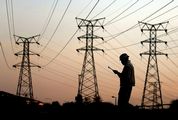GROWTH in spending by households and private companies accelerated while that by government slowed in the second quarter, supporting the expectation that economic growth and employment will be modest this year.
This is reflected in the South African Reserve Bank’s quarterly bulletin released in Pretoria on Tuesday. Improved spending by private companies in particular has been welcomed, as businesses have been blamed for holding onto billions of rand and not investing in projects that could grow the economy and create jobs.
Growth in spending by private businesses jumped to 4.4% in the second quarter from an annualised 2.8% before, supported by increased investment activity by agriculture, mining and manufacturing. Mining companies spent on machinery and equipment, while manufacturers spent on food, fuel and motor vehicle sub sectors among others.
Business Unity South Africa special policy adviser Raymond Parsons welcomed the growth in private business spending, but said it was still too early to say whether it represented a sustainable trend.
"On present evidence the pattern of modest growth, combined with a weak balance of payments position, is likely to continue for the time being, thus keeping the economy on a stable but low plateau," he said.
Growth in spending by households accelerated from an annualised 2.3% in the first quarter to 2.5% in the second quarter, the bulletin showed. This was in line with a FNB-Bureau for Economic Research consumer confidence index which rebounded from -7 to 1 in the second quarter of this year.
The Bank warned, however, that the pace of increase in household spending was still lower than the average rate of growth recorded in the past three years. The recorded increased spending on durable, semi-durable and non-durable goods could be explained by higher disposable incomes, according to the Bank’s head of economic reviews and statistics Johan van den Heever.
"There was an increase in households’ disposable income. We think that there were some increases in employment, which helped to support household income," he said.
Despite the good news on consumer spending, debt levels remain high. Household debt to disposable income rose to 75.8% in the second quarter from 75.4% before, indicating a large portion of household incomes still goes to servicing debt.

Picture: FINANCIAL MAIL
GROWTH in spending by households and private companies accelerated while that by government slowed in the second quarter, supporting the expectation that economic growth and employment will be modest this year.
This is reflected in the South African Reserve Bank’s quarterly bulletin released in Pretoria on Tuesday. Improved spending by private companies in particular has been welcomed, as businesses have been blamed for holding onto billions of rand and not investing in projects that could grow the economy and create jobs.
Growth in spending by private businesses jumped to 4.4% in the second quarter from an annualised 2.8% before, supported by increased investment activity by agriculture, mining and manufacturing. Mining companies spent on machinery and equipment, while manufacturers spent on food, fuel and motor vehicle sub sectors among others.
Business Unity South Africa special policy adviser Raymond Parsons welcomed the growth in private business spending, but said it was still too early to say whether it represented a sustainable trend.
"On present evidence the pattern of modest growth, combined with a weak balance of payments position, is likely to continue for the time being, thus keeping the economy on a stable but low plateau," he said.
Growth in spending by households accelerated from an annualised 2.3% in the first quarter to 2.5% in the second quarter, the bulletin showed. This was in line with a FNB-Bureau for Economic Research consumer confidence index which rebounded from -7 to 1 in the second quarter of this year.
The Bank warned, however, that the pace of increase in household spending was still lower than the average rate of growth recorded in the past three years. The recorded increased spending on durable, semi-durable and non-durable goods could be explained by higher disposable incomes, according to the Bank’s head of economic reviews and statistics Johan van den Heever.
"There was an increase in households’ disposable income. We think that there were some increases in employment, which helped to support household income," he said.
Despite the good news on consumer spending, debt levels remain high. Household debt to disposable income rose to 75.8% in the second quarter from 75.4% before, indicating a large portion of household incomes still goes to servicing debt.


























Register/Login
Close XMy News
You can only set up or view personalised news headlines when you are logged in as a registered user. Thereafter you can choose the sectors of industry in which you are interested, and the latest articles from those sectors will display in this area of your console.
Login or Register.Top Stories
My Watchlist
You can only set up or view your share watchlist when you are logged in as a registered user. Thereafter you can select a list of companies and enter your share details to monitor their performance.
Login or Register.My Clippings
You can only clip articles when you are logged in as a registered user. Thereafter you can click on the "Read later" icon at the top of an article to save it to this area of your console, where you can return to read it at any time.
Login or Register.Change: -1.21%
Change: -1.31%
Change: -1.11%
Change: -1.12%
Change: -2.16%
Data supplied by Profile Data
Change: 0.00%
Change: 0.00%
Change: -1.21%
Change: 0.00%
Change: 0.00%
Data supplied by Profile Data
Change: -0.39%
Change: -0.29%
Change: -0.33%
Change: -0.45%
Change: -0.19%
Data supplied by Profile Data
Change: 0.00%
Change: 0.00%
Change: 0.00%
Change: 0.00%
Change: 0.00%
Data supplied by Profile Data